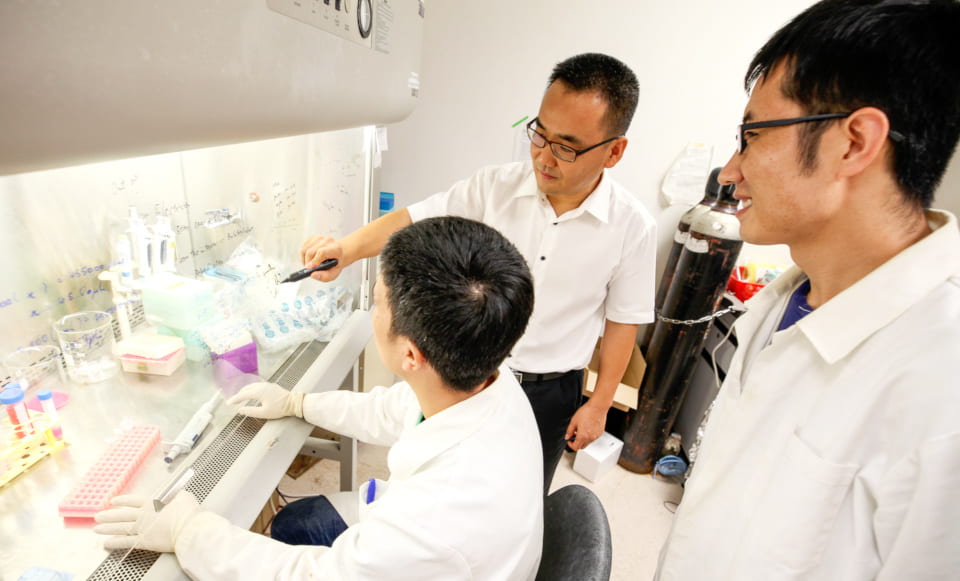And the winners from College of Science are…
Uncovering How Radiation Damages Molecules Over Femtoseconds
Now, researchers from Nanyang Technological University, Singapore (NTU Singapore) have performed the first experimental study showing how ionizing radiation alters organic molecules dissolved in water, over time-frames of just one quadrillionth of a second – a femtosecond.
Watching a molecule dance: Ultrafast Structural Rearrangement Dynamics Induced by the Photodetachment of Phenoxide in Aqueous Solution
Detecting Disease Through the Interplay of Light and Sound
In modern medicine, doctors can use a variety of technologies to peer inside their patients to detect and monitor the signs of disease. Methods such as X-ray imaging and ultrasound imaging are well known to the public, but researchers are also developing new imaging methods of unprecedented speed and sensitivity, by creatively combining ideas from physics, chemistry, and biology. Read more
Up-ending a Fundamental Reaction in Organic Chemistry
Nucleophilic substitution is a class of chemical reactions encountered throughout organic chemistry, including reactions used in manufacturing common petrochemical and pharmaceutical products. Its underlying mechanism was discovered in the 1930s by the British chemists Edward Hughes and Christopher Ingold, who showed that an electron-rich chemical species, called a nucleophile, “attacks” and replaces an electron-poor fragment of an organic molecule, called a leaving group.
Phosphenium Catalysis
The research group of Rei Kinjo at Nanyang Technological University, Singapore, has recently discovered a groundbreaking procedure for synthesizing DHP that is cheap, efficient, and non-toxic.
Colour of Bird’s Nest
Edible bird’s nest, or 燕窝 (yàn wo), is one of the most expensive Asian food delicacies today, retailing for about S$5,000 per kg. It has been prescribed in traditional Chinese medicine for over a thousand years, and forms a multi-billion dollar annual trade. It is usually white in colour, but there also exists a red version, called “blood nest” (血燕, xuĕ yàn), which is significantly more expensive and believed to have more medicinal value.
Nanostructure for Nitrogen Fixation
The research group of Ling Xing Yi has developed a novel method for efficiently performing nitrogen fixation without the extreme conditions of the Haber-Bosch process. Their method is to combine a nitrogen-fixing catalyst with a nanostructure known as a Metal-Organic Framework (MOF).







